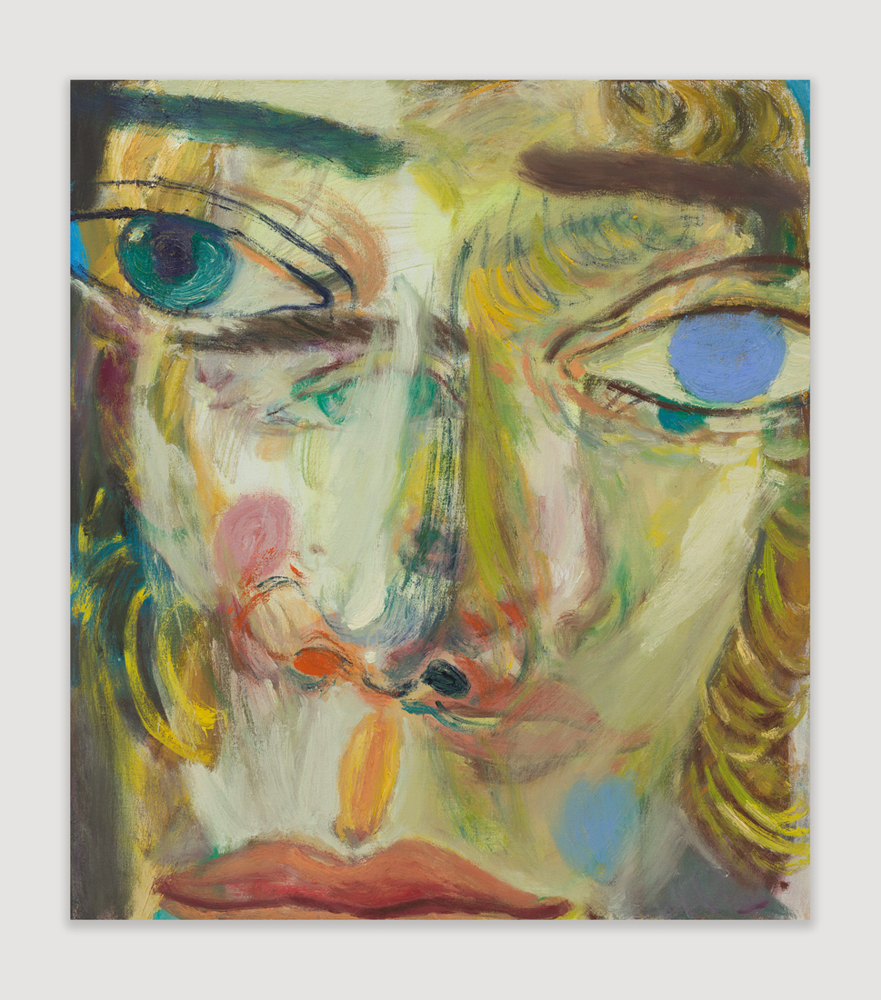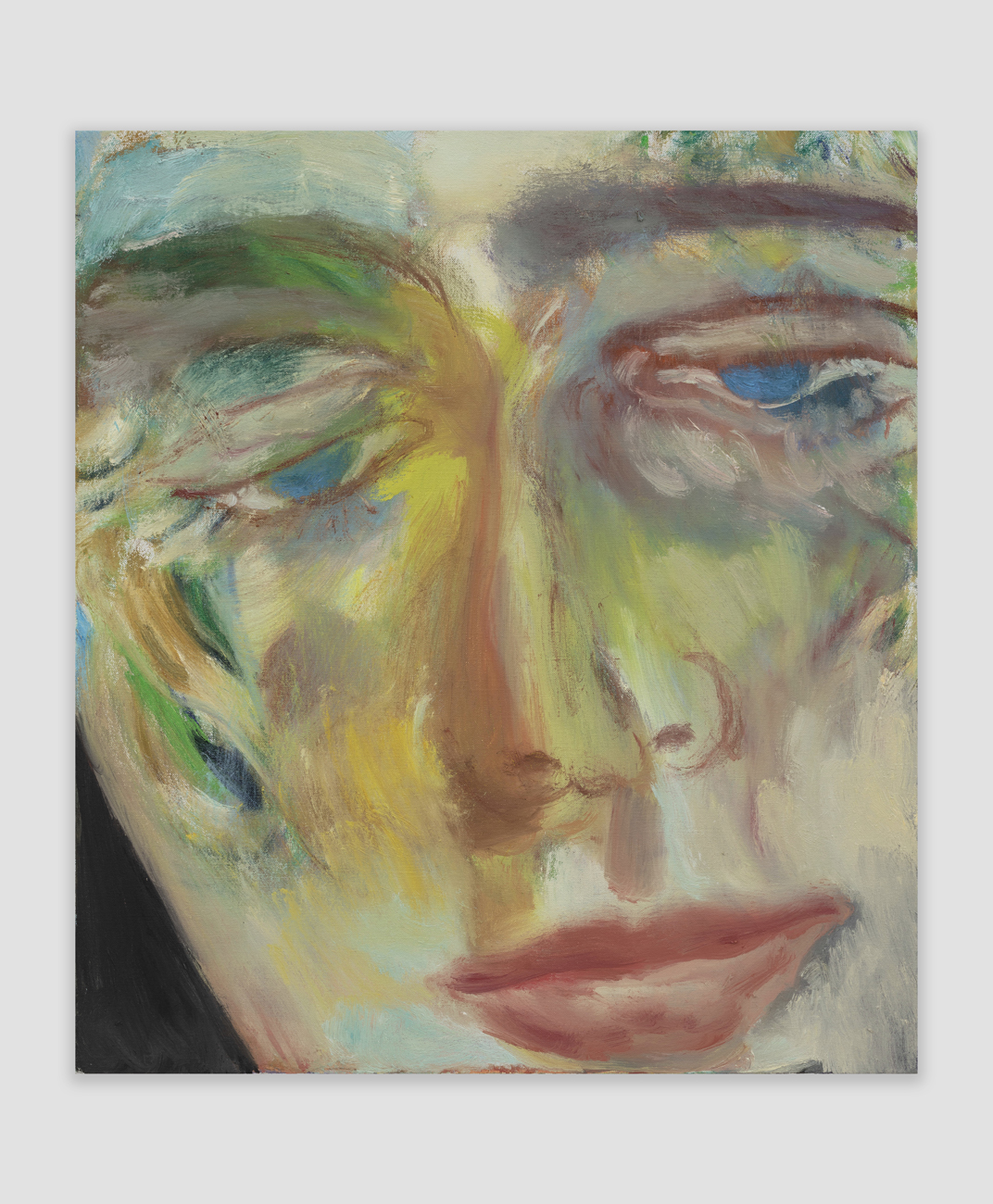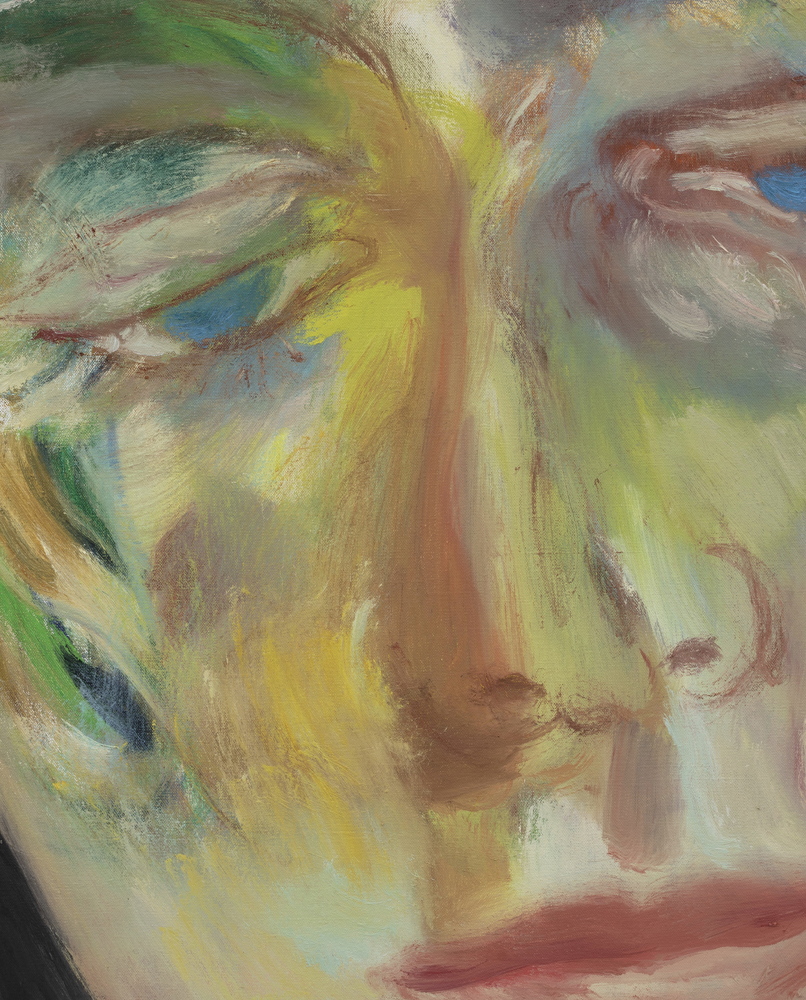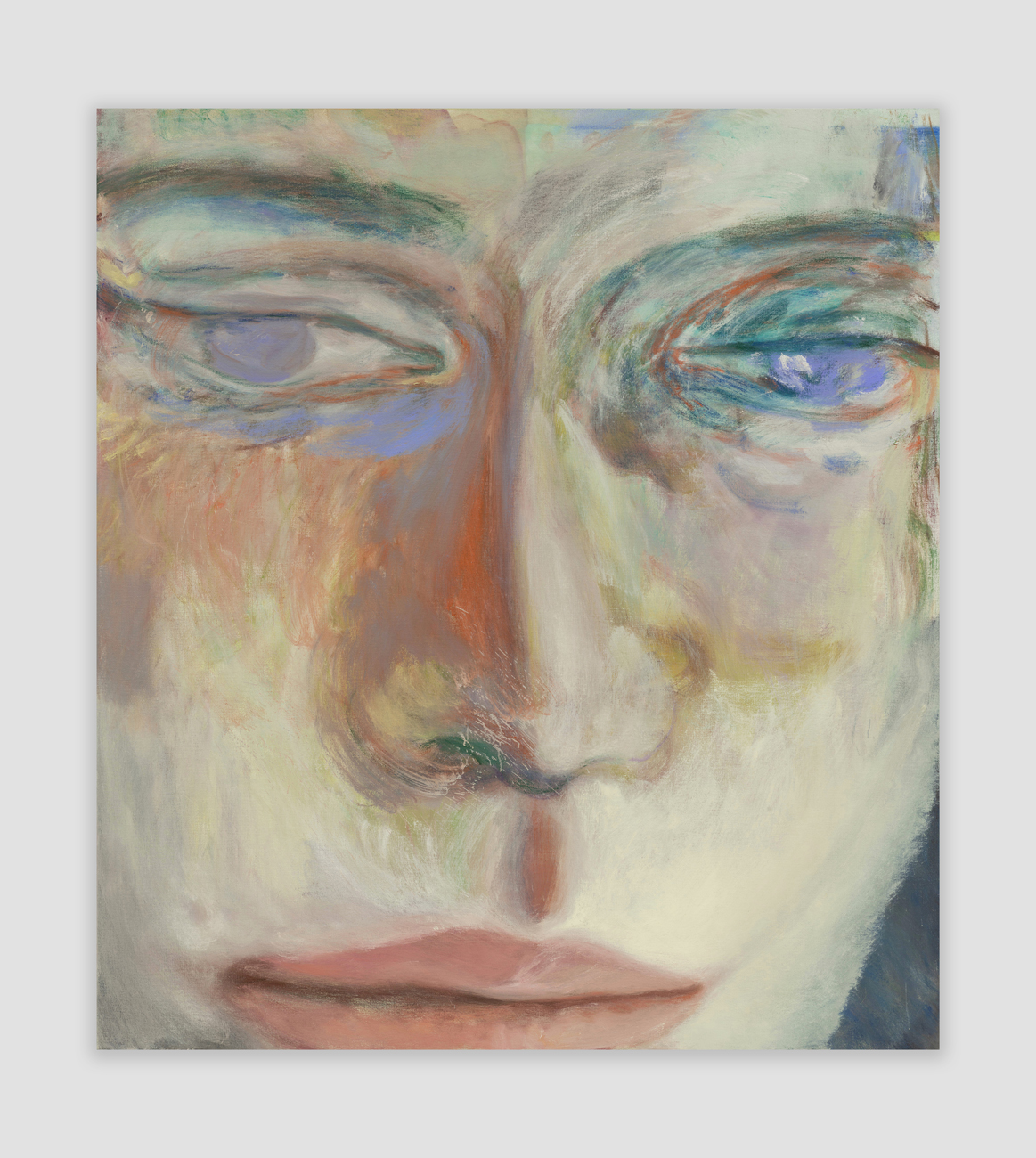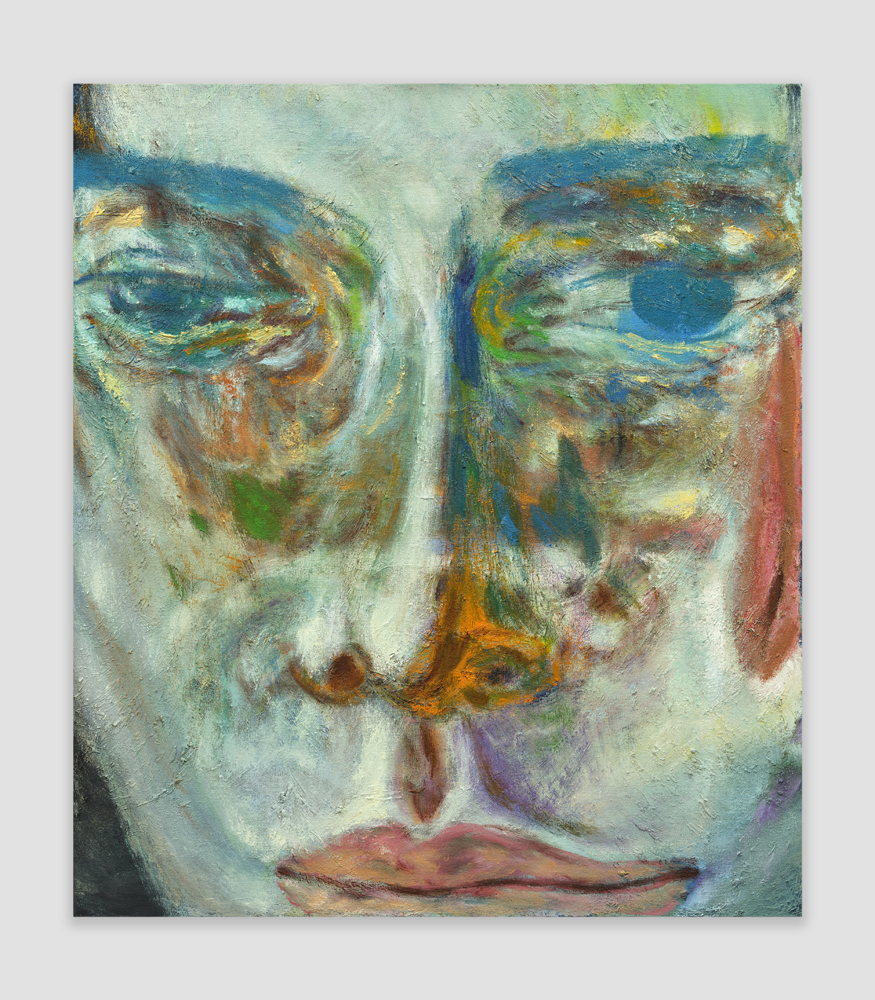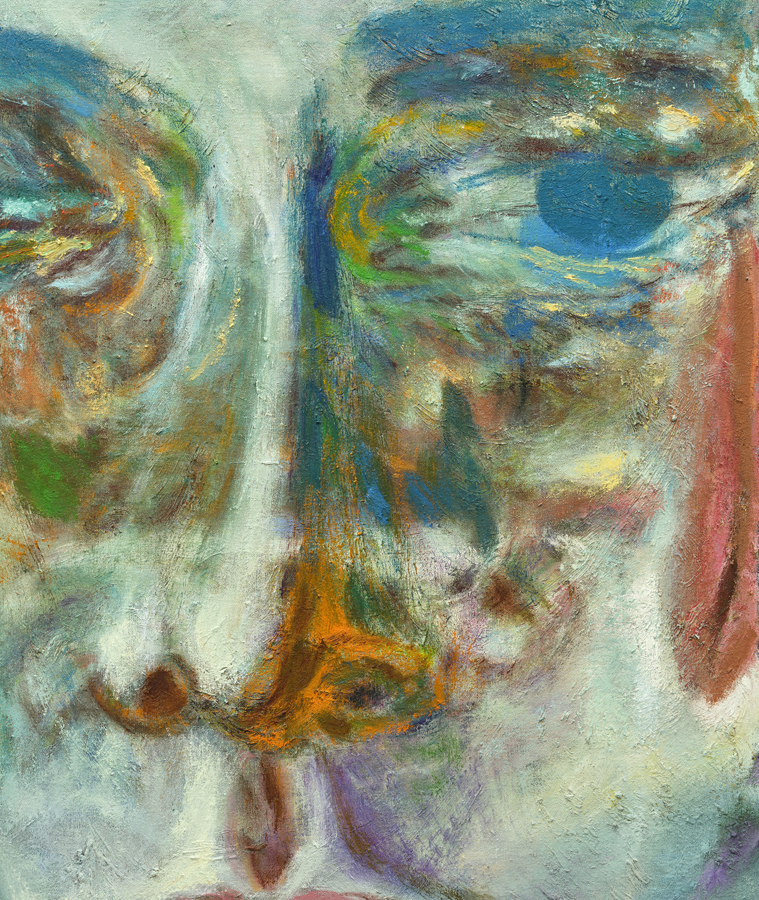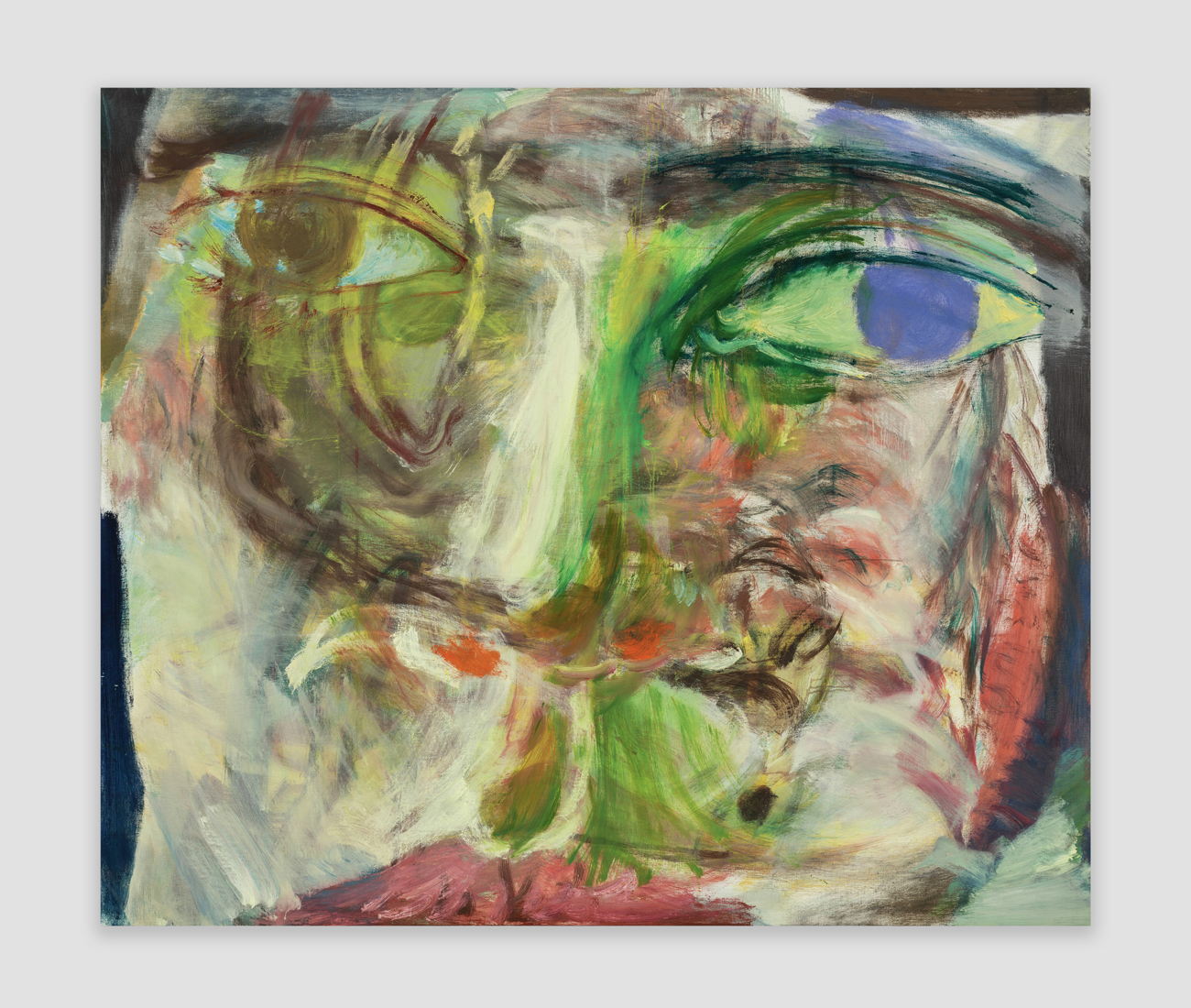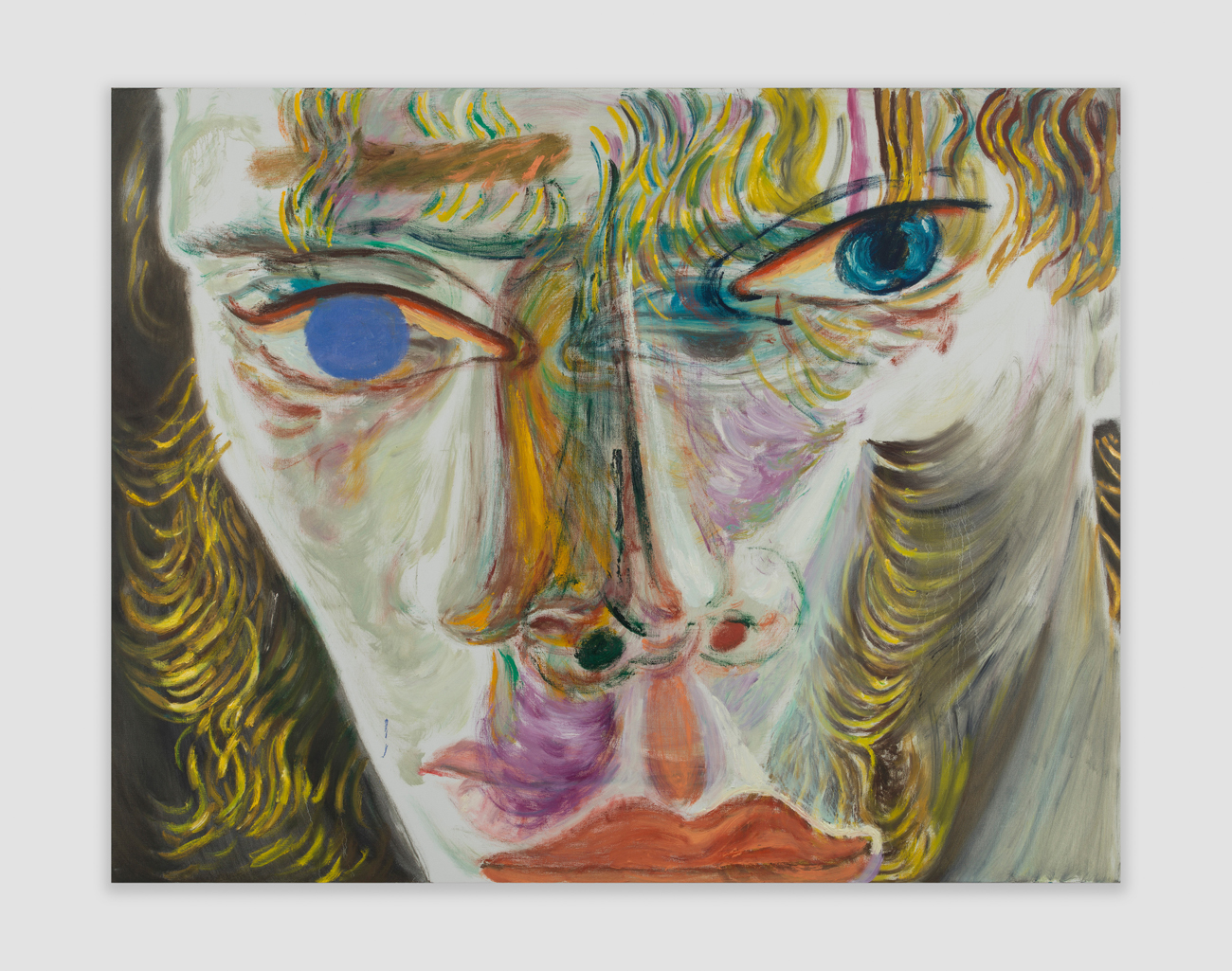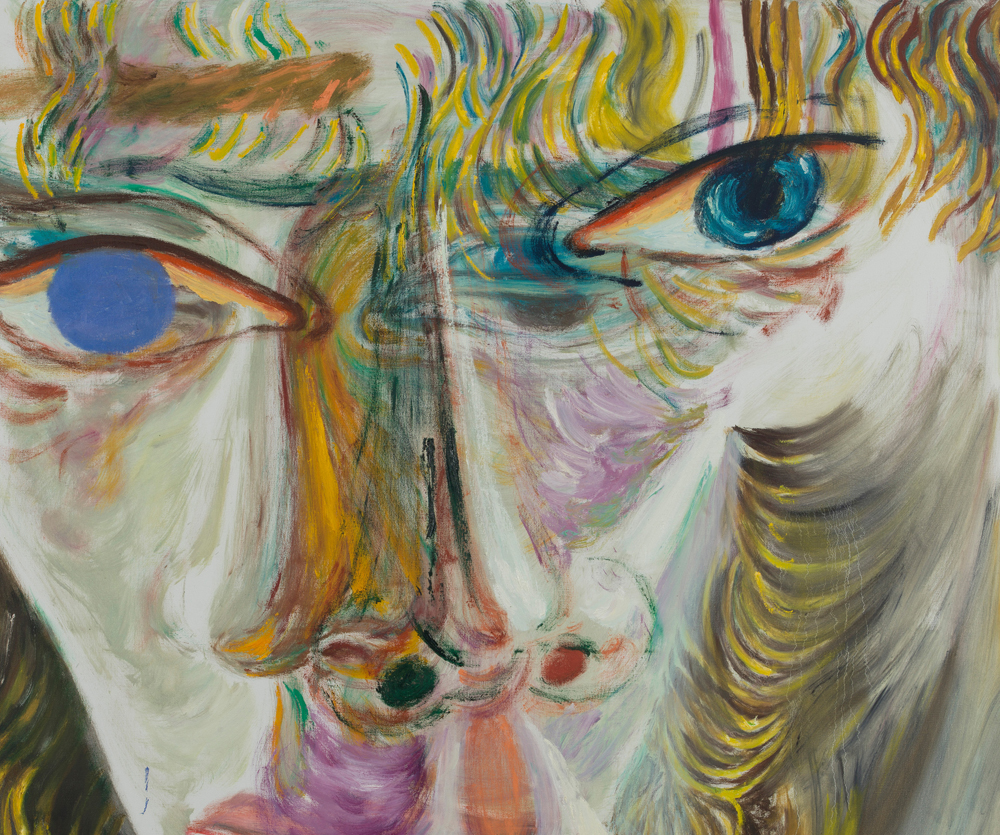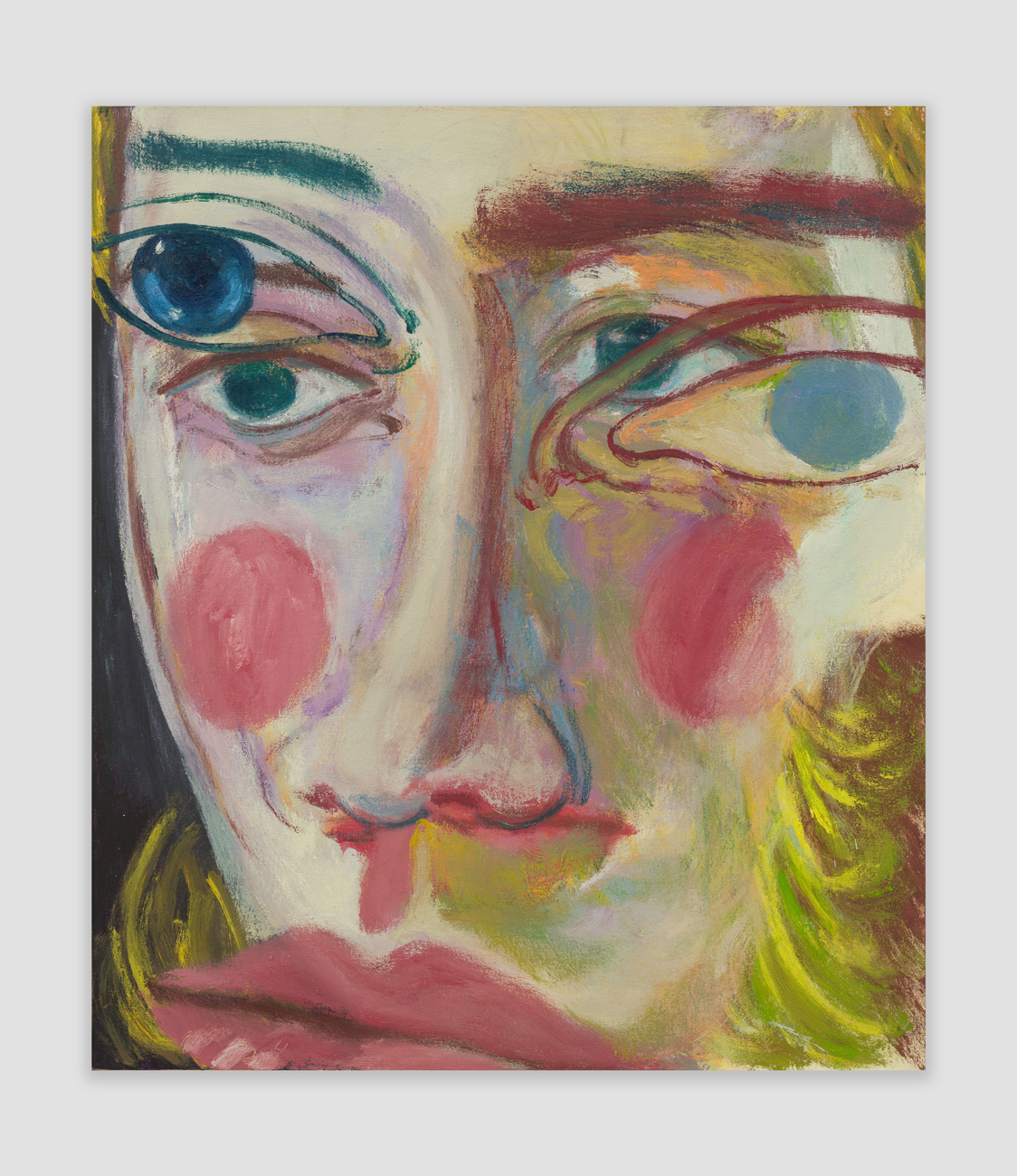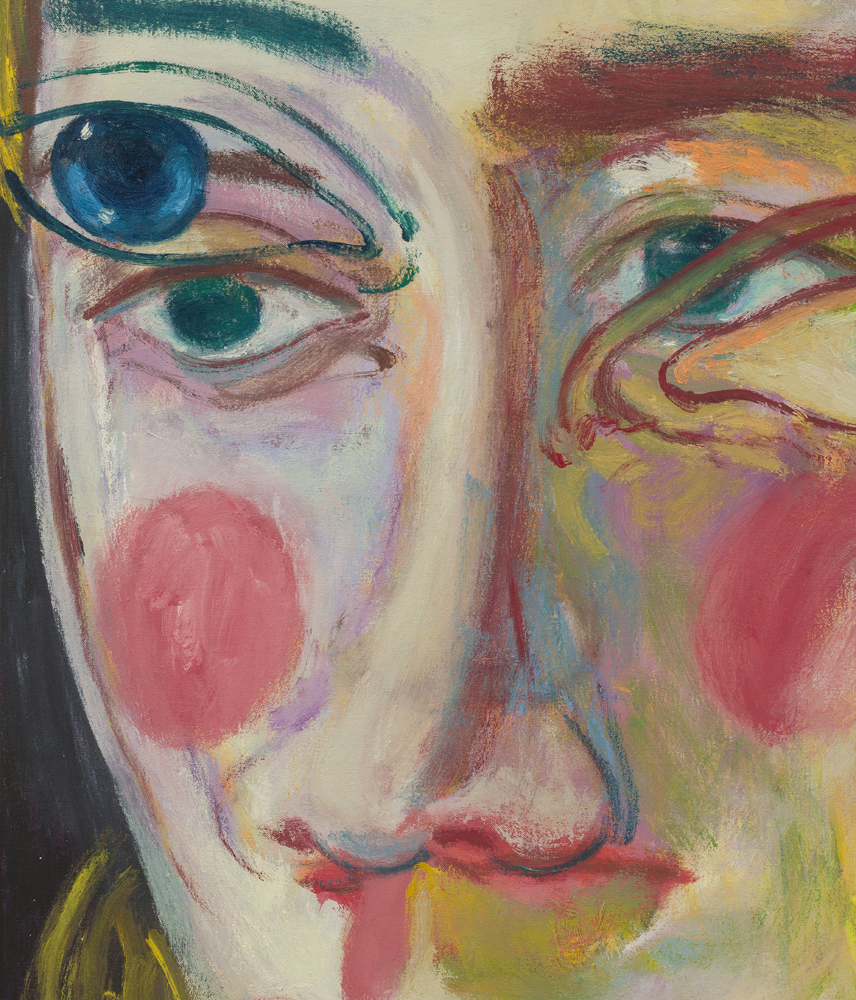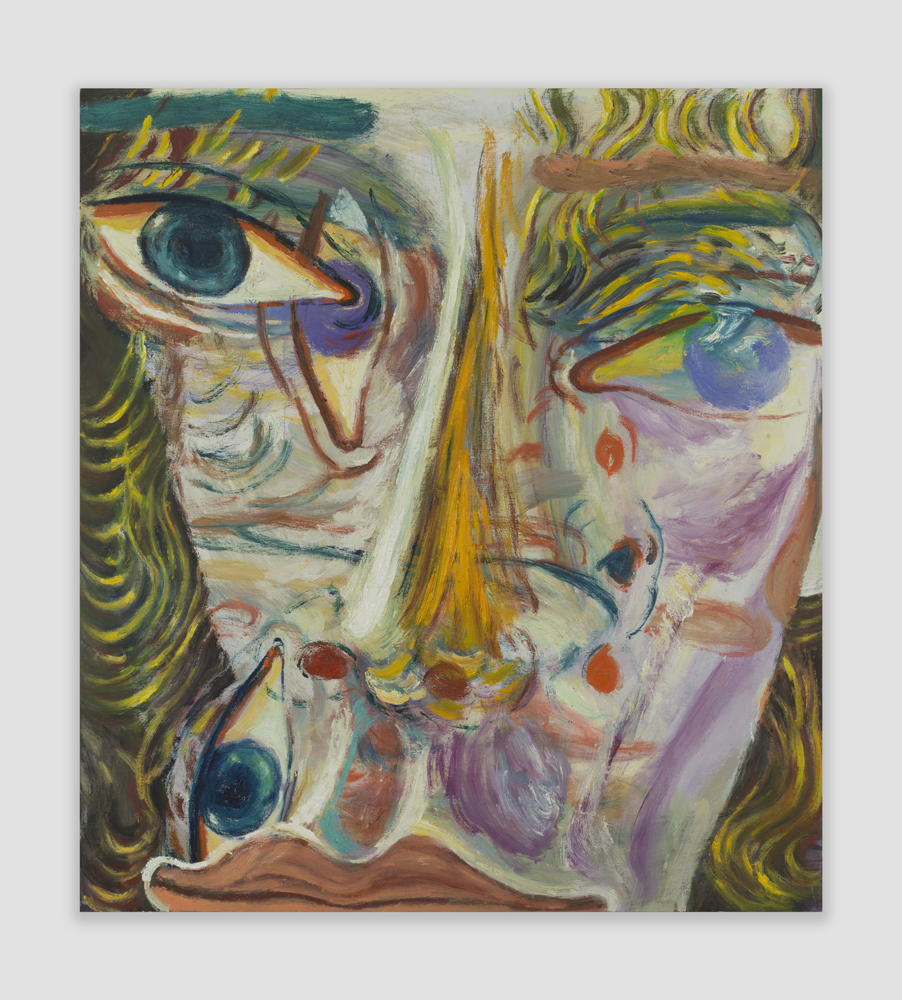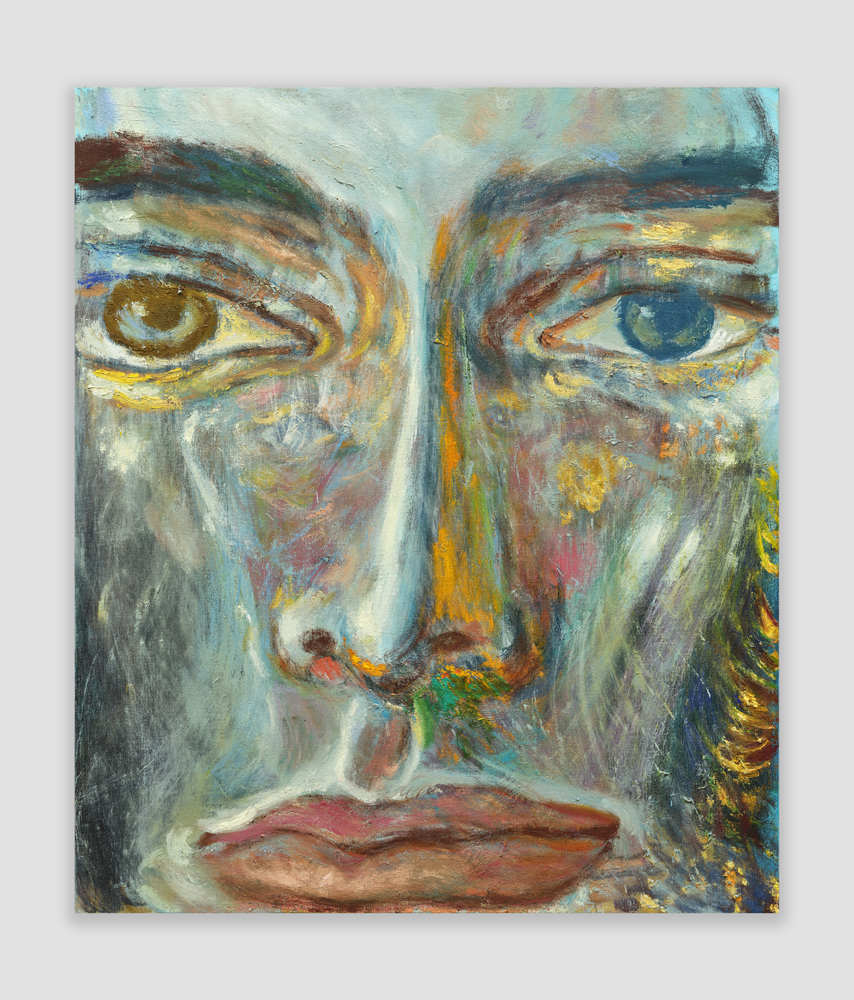Tara Downs is delighted to announce Whiplash, a solo exhibition featuring the work of oil-on-canvas paintings by Shanghai-based artist Jiang Cheng. Whiplash unveils the artist’s latest oeuvre, delving into the sequestered dialogues of his psyche and soul. The exhibition constructs a vibrant battleground where contemplation and tumult converge, unfolding a tableau of mutual encounters and transformations between self and other.
In his ongoing “U” series, Jiang Cheng always initiates his painting process with a portrayal of a face, employing swift, resolute, and sometimes vehement physical movements to work the surface malleable. Engaging with figures that tower beyond his own physicality, he wrestles and negotiates with them, embroiling himself in a silent, yet potent confrontation where each stroke symbolizes a contest of wills between the canvas and the images housed within his mind. A consequential struggle unfolds: faces become layered, eyes fiercely collide, and forms may be partially erased or fully realized, even while the canvas itself undergoes distortion. Victory, in this context, is not defined by possession, but rather through the emergence of a truthful image, contingent upon the artist’s precise moment of choice—a commitment to propel the fragmented imagery toward a momentous equilibrium.
As if Jiang has immersed his entire being into this introspective communion, his artistic training, extensive readings, and lived experiences dissolve, allowing him to plunge into a realm free from any extraneous consciousness. The eighth-century Chinese calligrapher Yan Zhenqing, too, once grappled with such profound depths of consciousness. In the emotionally charged running script piece Ji Zhi Wengao (Draft Eulogy for Nephew Jiming), written amidst a maelstrom of grief and indignation during the An Lushan rebellion, Yan wrote, erased, revised, and continued writing—an outpouring where discipline gave way to unabated emotion. [1] Jiang also draws inspiration from the distinctive balance of spontaneity and intention in Cy Twombly’s work. The latter’s graffiti-like scribbles, scratches, and ostensibly chaotic marks serve as vessels for narrative, emotion, and symbolism, reenacting the multifaceted experiences of the Trojan War, heroic to its tragic. [2] Much like Twombly, who often celebrated the unbridled creativity of childlike art, Jiang infuses his work with an effort to comprehend the ethos of his daughter’s instinctive drawings—a flowing consciousness unencumbered by formalistic doctrines.
In his work, Jiang elucidates how self-expression through portraiture can mirror the transhistorical and transcultural lineage of artistic tradition, intertwining influences ranging from Chinese calligraphy and Greco-Roman mythologies to playful sketches by his daughter and the abstract expressionist tradition. His perpetual exploration and pursuit of the unconscious mind illustrates an existential search into human existence, struggle, love, and mortality, as well as the relational dynamics between self and other, and subject and object. Moving away from his inherent identity, Jiang intentionally depicts figures that are decidedly not him, typically characterized by curly blond and brown hair, heterochromatic eyes, and facial features that amalgamate elements from diverse ethnicities. Through this, the artist scrutinizes others—sometimes confrontationally—places them in spaces to be observed, and repositions himself by accentuating his own otherness.
Thus, Jiang’s recent series of works marks a transition from theatricality to kinetic interplay, highlighted by a more vibrant use of color and an emphasized focus on the figures’ eyes. As these figures regard one another, the dynamic evokes the intensity of opponents engaged in a close exchange. In Eastern scriptures, such as the Chuang-Tzu, certain Indian philosophical schools, and Zen Buddhism writings, there emerges a distinctive form of communication aimed at “enlightenment” or a pathway toward it. This dialogue often involves reciprocal exchanges that lead to a crescendo, culminating in an abrupt shift in the consciousness or worldview of one of the parties involved in the conversation. [3] The ultimate objective of such confrontations or dialogues, however, leans towards the potential for understanding. Echoing philosopher Hans-Georg Gadamer, understanding stems from the self’s operation as an “I” subject. This signifies the recognition that the “I” is engaged in a continuous process of transmission. [4] Through ongoing encounters between the self and the other, one is irrevocably transformed into a reality where boundaries, identities, and preconceptions are relentlessly and beautifully shattered.
Jiang’s artistic endeavors ought to be perceived as a quest—a dialogic probing that tirelessly seeks transformative potential. Within this realm of possibility and perpetual becoming, the figures, the artist, and the audience amalgamate into a singular entity, both fragmentary and whole at once. This unity resonates as an intimate confession and a silent proclamation, stirring the cold shiver one feels when immersed in the chilling currents of the river of art.
— Huirong Ye
[1] Yan Zhenqing, Ji Zhi Wengao (Draft Eulogy for Nephew Jiming) 祭侄文稿, 758.
[2] Cy Twombly, Fifty Days at Iliam, 1978. Oil, oil crayon, and graphite on canvas. Philadelphia Museum of Art.
[3] Benoît Vermander, The Hermeneutical Triangle: The Formation and Interaction of Sinology, Comparative Classics and Cross-cultural Theology, trans. Xie Hua et al. (Shanghai: Fudan University Press, 2022), 184.
[4] Hans-Georg Gadamer, Wahrheit und Methode, in Gesammelte Werke, I (Tüblingen: J. C. R. Mohr, 1990), 295.
